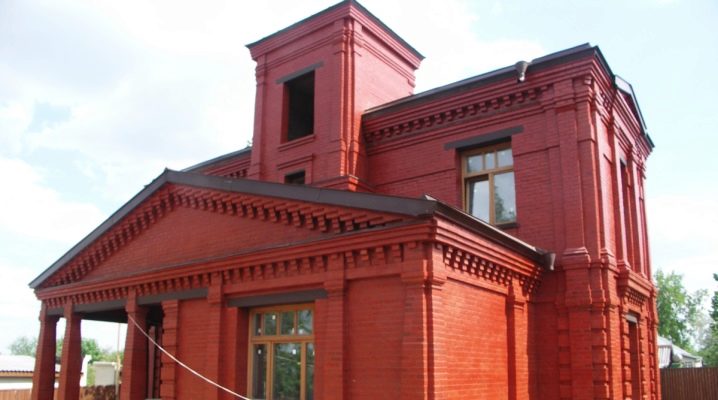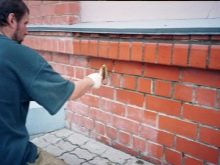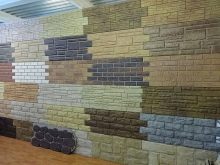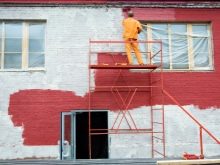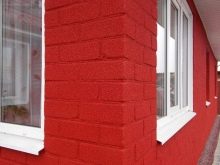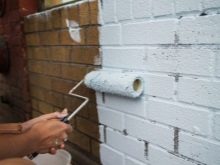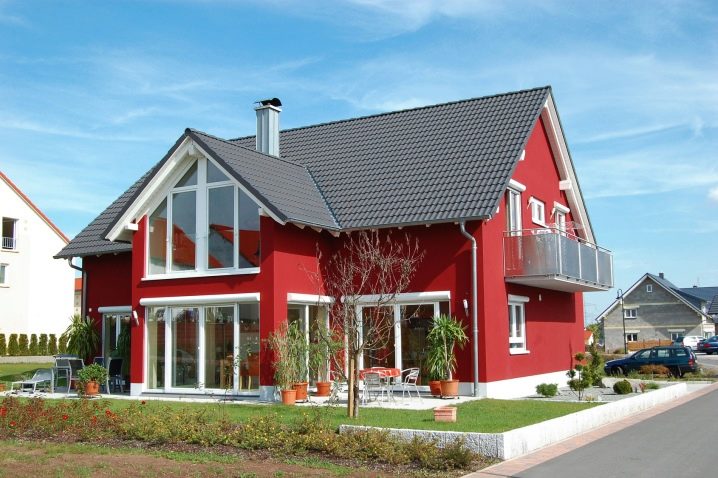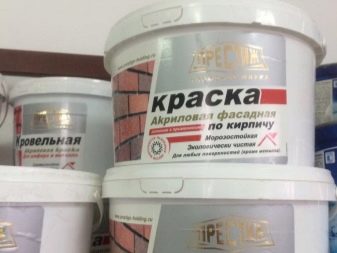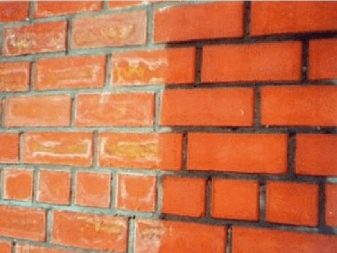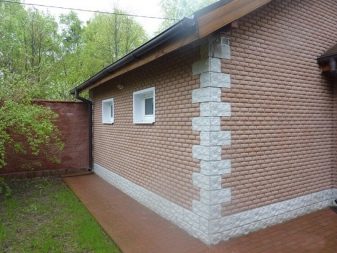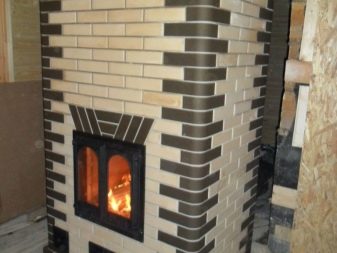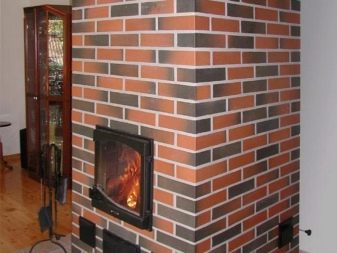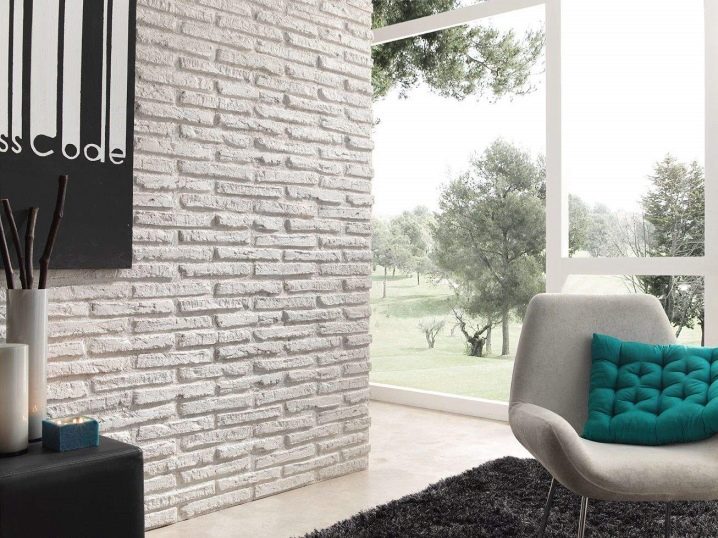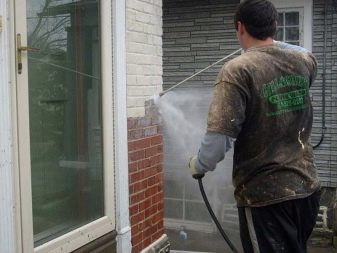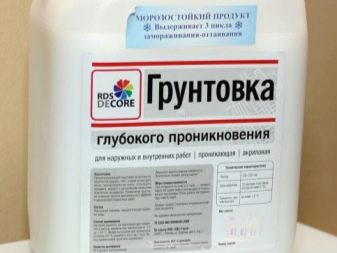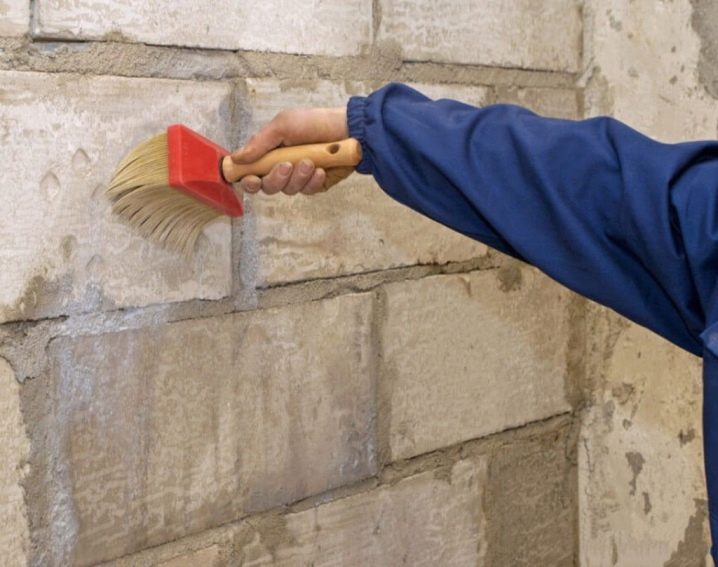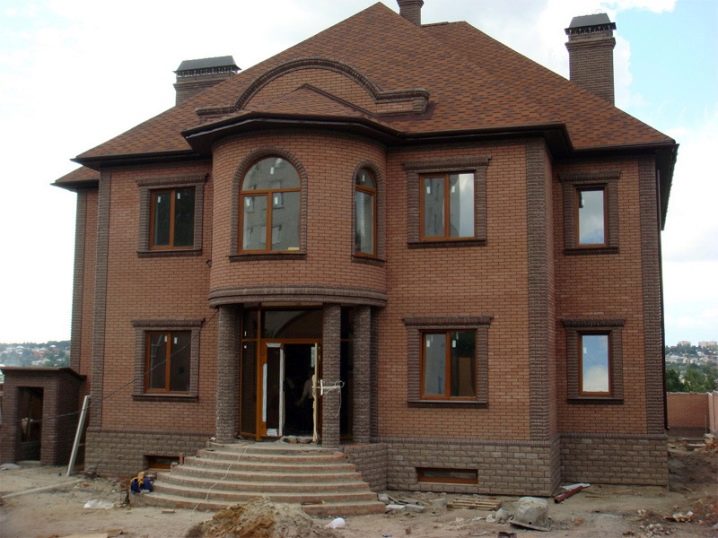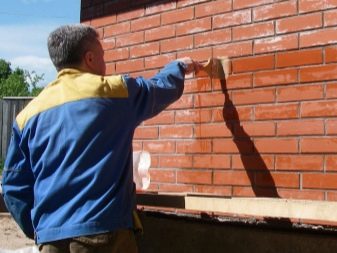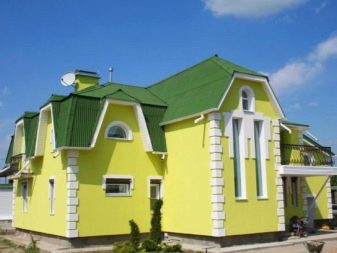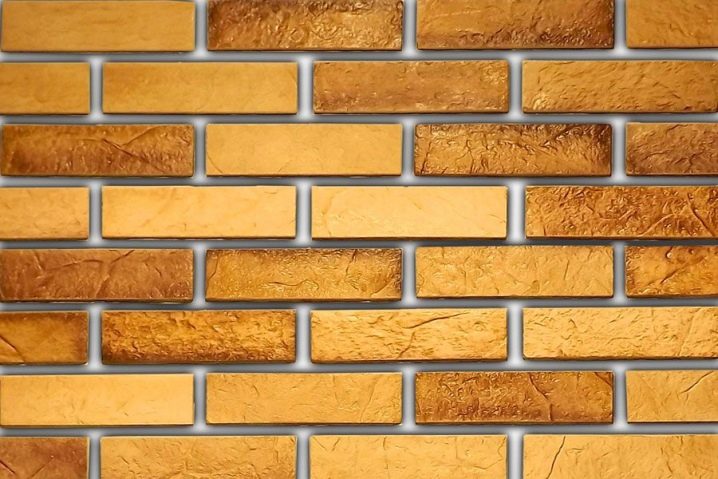Facade exterior paint for bricks: selection criteria
We live in the world of information technology. Through advertising, hundreds of companies, including construction supermarkets and shops, seek to convey to buyers information about the quality, properties, and uniqueness of the goods they sell. The range of products offered is so great that sometimes it is not easy to make the necessary selection of components for repair. The fashion trend at present is the creation of a unique bright facade of its brick house with the help of paints.
Special features
Today, there are a number of materials for exterior finishing works.
Modern paint products have a number of the following properties:
- complete absence of chemically harmful substances in the composition;
- resistance to mechanical stress and sunlight);
- elasticity of the coating after dyeing;
- high moisture resistance;
- compatibility with other paints;
- wear resistance;
- it is very easily cleared of pollution;
- vapor permeability.
For painting both a new house and old buildings, paint on silicate bricks is suitable. It is applied easily, does not drip, does not splash. At cost, it is much cheaper than other materials, more accessible to a wide range of consumers.
In general, a brick in its characteristics is a material that is fully ready for long-term use while maintaining its original appearance. However, the building will look familiar and the same type. Paints will give it a completely new, sometimes fabulous appearance.
Types
The main types of paint coatings for bricks are acrylic, silicone, silicate, enamel paints. They are glossy, semi-gloss and matte. Each has its own reflective ability (complete lack of matte, most glossy).
Acrylic coatings are more resistant to temperature changes., the term of their use is 8-11 years.The front painted walls are not subject to cracks and wash well. Paint is not showered by rain and sun. Acrylic resin is added as a component, therefore moisture is poorly absorbed.
Full drying of the wall after processing is achieved after 24 hours.
In most cases, it is not recommended to apply coatings on the newly erected facade. This rule does not apply to acrylic paints, since they contain a binder material that stops the alkaline corrosion that is present in a fresh solution. Therefore, already 30 days after the construction of the building, it is possible to paint it in any color.
Silicone paints differ in strength and speed of drying (- 3 hours after painting). Protects siloxane (resin-based) mortar from mold and mildew. In regions with hot climates and high air temperatures, painted facades do not change their appearance when exposed to ultraviolet rays.
Contamination in the form of dust on covered buildings is very quickly removed naturally (by precipitation). A painted house can stand for 18-20 years until the next repair.Different colors are used to change the color of the paint. Primary color is white. You can convert it to any.
Silicate paints are subject to changes in air temperature. They are well tolerated by moisture, have high vapor permeability and fire resistance. Applied in two doses. The first layer dries in 24 hours. The second in 8-11 hours.
Enamel coatings are flammable and toxic. In their composition there is varnish. However, these paints are very moisture resistant, durable and resistant to corrosion. Drying period - 6-20 hours.
On the basis of cement created a special mineral paint on the brick. It is intended for previously painted facades that are difficult to restore. The degree of water resistance and vapor permeability of such a paint material is very high. The color of the brick house will not change for 10 years after the walls are treated with such paint.
Oil paints are used much less frequently. Most often they paint Russian stoves installed in summer kitchens (temporary houses). Beautiful artistic ornaments and drawings are very convenient to apply with the help of this paintwork material.
Colorless varnish can be a substitute for oil paints, it fits well on a brick wall, which looks natural after painting.
The best option for coloring are multi-colored latex acrylic paints (Belinka, Sicily, Acrylate, Husky, Mikrel and others). Each of them has its own unique characteristics.
Paint "Sicily" is a self-cleaning material modified by silicone and resistant to alkali. Used for facades of houses located in dusty areas.
Preparation for painting
If the building was built a long time ago, white salt spots can form on the surface of the walls. Manufacturers of latex paints have developed binding elements that can form a film that prevents the appearance of such deposits on brick walls. To prevent the accumulation of white layers, it is necessary to find the causes of their occurrence.
It is necessary to carefully check the surface for the presence of condensate, with the help of a sealant (cement) to eliminate the places where the penetration of moisture from the outside is observed. All gaps and irregularities should be repaired. This is followed by a plastering process, at the end of which the facade walls are given time to dry. Then processing (grouting and smoothing the seams) is performed with a metal brush.
The treated surface should be washed with water, you can use chlorine. Dried walls ground.
The primer can be purchased ready-made or made independently.
Finished are the following types:
- Acrylic - best suited for latex paint.
- Silicate - has good breathability. Resistant to precipitation.
- Epoxy - provides surface waterproofing and adhesion.
To make yourself a solution for priming brick walls, you must take the following components:
- copper sulphate -1 part;
- laundry soap, 2 parts;
- joiner's glue (bone) -5 parts.
Then take a bucket of water and bring it to a boil. Crush laundry soap, rubbed it on the kitchen grater. Pour the soap chips into boiling water, stirring until dissolved. To the solution add wood glue and vitriol.
After that, they reduce the heat and leave the mass to boil for half an hour. After the time, the container with the mixture is removed from the heat, cooled a little and filtered (in the form of heat) through a sieve. The solution is ready. It is applied as any primer with a brush, roller or special equipment for painting.
The whole preparatory process ends here.
Coloring
Painting the facade of silicate brick itself is a long, but completely uncomplicated procedure.
Need to choose a paint that meets all requirements., the main of which is vapor permeability. After painting the house should become saturated, not lost the ability to "breathe." An important point is the consumption of material. The more paint is used up, the more dense layer it will fall, hide all the bumps and blemishes on the wall. Do not forget about the color after drying. As a rule, the surface of the walls will be somewhat darker than the color of the original dye used in their painting.
Before starting the work itself, it is necessary to cover parts of the house with polyethylene, which do not need painting. These are entrance doors, windows, basement. You will also need scaffolding or high ladder, scaffolding.
It is best to paint the entire area in one day, because even with careful selection on the next day, it is very difficult to get completely identical color gamut. Painted at different periods of the wall have a slightly noticeable, but different shade. It is recommended to paint first with a brush in the areas of joints of all bricks,and after drying again with a roller, dipping it into the bath. Movements are made in different directions (both horizontally and vertically). It is important to apply paint evenly. The first layer is applied with a brush. It gives you the opportunity to get close to the small grooves between the bricks. Next, the surface is allowed to dry. The drying time for each paint is different and is specified by the manufacturer on the packaging (can). The second layer is applied with a roller or spray gun. In order to carry out work using a spray bottle, small skills are needed.
Typically, windows or cornices emit more saturated shades for contrast. If the house has two or three floors, then it is acceptable to use different colors for painting each level.
Works are always carried out in sunny weather. The date of commencement and termination of the entire painting process is determined by the owner of the house independently.
Step by step, the home will be transformed, will acquire a completely new appearance, saturated with color, which will delight the eyes for many years. Add a little imagination, imagination and effort, and it will pay off a hundredfold!
You will find tips on choosing exterior paint in the following video.
